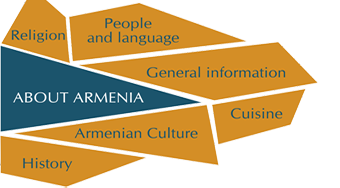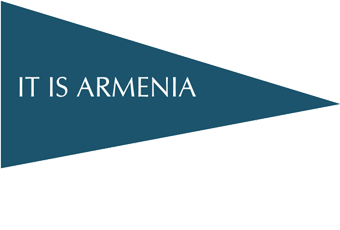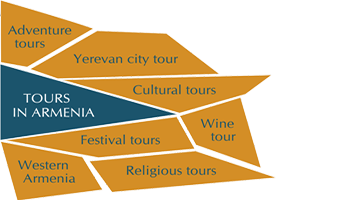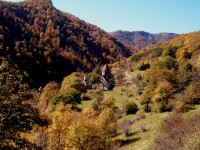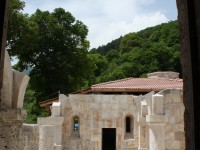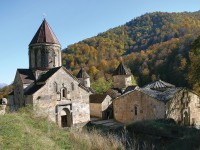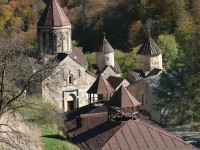Haghartsin
Haghartsin is located in the Marz (region) of Tavoush, 18 km far from the city of Dilidjan and 7 km far from the highway leading to Idjevan. In the ravine, located in the southern side flows the river of Haghartsin and by the eastern ravine flows the Great Spring (Mets Aghbyur). There are two versions of the etymology of the word Haghartsin. According to the first version, the word comes from the word "Play" (in Arm. Haghal) of local dialect and the word "Eagle" (in Arm. Artsiv), which means the Eagles’ play (Haghartsin), as , according to legend, during the consecration of the church, numerous eagles were hovering over the church and the church got its name. The second version is also connected to Tavoush dialect - the wildcat (in Arm. Hagar) and labour of animals (in Arm. Tsin), which means the birthplace of wild cats (Agartsin). The monastic complex was built during the 10th -13th centuries. The oldest building of the complex is the church of St. Grigor, which outwardly is rectangular, inwardly is a crosswise domed building. In the eastern side of the church is the central four-column gavit (narthex) of the end of the 12th century, which has high reliefs on the angular sides of the ceiling (the images of people, sockets, bird, angel, and also inscriptions are all here). The remains of mausoleums near the southern wall of the gavit (narthex) have preserved there. To the north side of the St. Gregory’s church is adjacent the vaulted chapel (13th century), and in the east side, very close to St. Grigor church stands the domed church of St. Stephanos built of bluish basalt with exquisite fragments(1244). The main building of the complex is the church of St. Holly Mother. It was completely built in 1281, but some observations suggest that it was founded in the 10th-11th centuries. In the western part of the monument is a dining room, which was built in 1248 by the architect Minas. The bronze pot which was found in Haghartsin (350 kg, now in the National Museum of History of Armenia) is one of the highly artistic samples of metallurgy: it was made in 1232, the four knobs are in the form of statues of lions, and the props are also artistically decorated. The monastery of Haghartsin was destroyed during the invasions of the Seljuk Turks, but was reconstructed by the Zakaryan counts.





